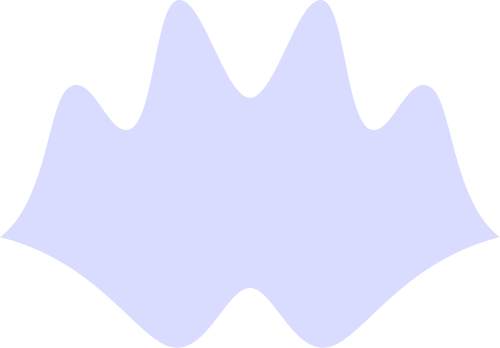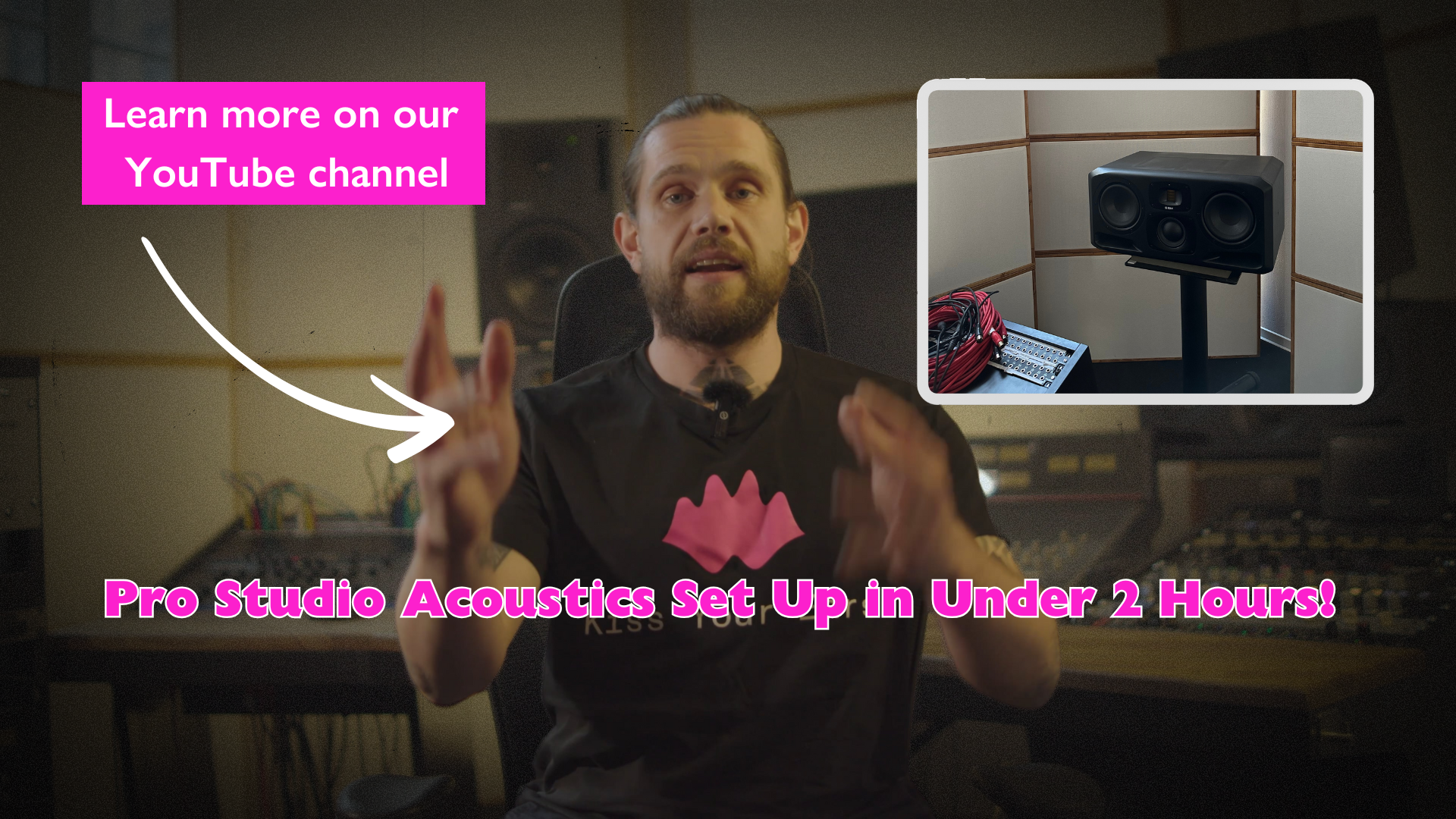Where Should I Put My Bass Traps?
Using the KYE King Kong Room Treatment System
The King Kong Room Treatment System has been designed to take advantage of a common rule that we have observed through measuring and treating 400+ rooms, since for the majority of rectangular symmetrical rooms, the treatment procedure is always the same.
Our placement plan has been developed to provide an accessible gateway to optimising your acoustic setup from which you can always advance at a later point for further control of your listening space. The goal is to take broadband control over your room’s transfer function, and here is how to do it:

Note: This system was designed using our own King Kong Premium which has been engineered to the maximum effectivity that can be achieved from a velocity absorber. It is therefore not guaranteed that other acoustic elements would achieve the desired results.
If you are using another company’s products (or DIY without enlisting our guidance), it is also likely that pressure absorbers and velocity absorbers would be necessary, which would render this system redundant, since pressure and velocity traps follow different placement theory.
Step 1: Treating the First Reflection Points

The first point of treatment is always to target the first reflection points. These are the nearest surfaces where the sound from your speakers reflects from the wall and interferes with your ears, leading to nasty comb-filtering and phase problems.

When a sound wave is reflected from a wall, the angle of incidence is always equal to the angle of reflection. In other words, the entry point is the same as the reflecting point (α = β). Following this principle, it is quite easy to calculate exactly where to place your absorbers, be it on the ceiling, side, front, or back walls. This can be done with arithmetics, a mirror, or a simple meter measure. However, keep in mind that the exact position will vary with your speaker placement, so be sure that your monitors are set up properly in an equilateral triangle and that your listening position is off the midway point of the room’s length axis before you proceed with installation, since that is acoustically the worst listening position.
To summarise:
- Start treatment with first reflection points.
- This targets problems caused by phase interference and comb filtering.
- Treating your first reflection points leads to greater clarity in stereo image and transient response.
- Make sure speaker setup is optimised before proceeding with installation.
- This is the minimum treatment amount for smaller rooms under 10 m².
Step 2: Adding Corners and the Front Wall

Step 2 takes the principle of Step 1 further by adding treatment for the front wall’s first reflection points. However, it also introduces a control method designed to take advantage of another physical principle, that velocity absorption treatment works best when placed at pressure minima and velocity maxima. When a standing wave propagates within a room, velocity and pressure are displaced by their radial frequency at an angle of 90 degrees. This happens at a quarter of a wavelength (or odd multiples of this number) from the wall.

By placing your absorbers in the corners, you can take advantage of random incidence and achieve a greater depth between the wall and your panels. This leads to higher absorption and a greater reduction of reverberation times, especially for lower frequencies!

Start by figuring out which frequencies are causing you problems and calculate their wavelength (), or locate where the pressure is at a minimum within the room using an SPL meter. This will be the most effective location for your velocity absorbers. We’ve simplified this process by suggesting corner placement as an alternative - we have worked arduously to design the trap with the optimal depth to density ratio, the King Kong Premium.
To summarise:
- This step adds the front wall to widen your sweet spot and imaging.
- It introduces velocity trapping as method for RT60 and modal control.
- You can take advantage of this rule through corner placement.
- Corner placement has the complementary benefit of tackling comb filtering due to speaker boundary interference.
- Depth is proportional to density: too much depth with too high a density may lead to reflections instead of absorption!
- Use this formula or an SPL meter to find out exactly where to place your traps.
- This is the minimum treatment amount for smaller rooms under 15m².
Step 3: Support your Sweet Spot

Points:
- Keeps the next treatment steps localised to where you need it the most: your listening area.
- This step adds support to corner traps and increases the effective absorption of modal decay along the length of the room.
- Corner traps provide greater control over speaker boundary interference.
- corner placement also breaks down modes along the width axis, leading to synergetic composition of the acoustic landscape in your listening area.
- Intermediate control for rooms under or equal to 10m².
- This is the minimum treatment amount for rooms under 15m².
Step 4: Modal Control

Points:
- Additional corner support is given to the ceiling in the sweet spot area, in line with the synergetic composition of the acoustic environment.
- When sound is reflected from a corner, the incident angle is focused directionally:

- By increasing the ceiling corner placement around the listening position, not only can one further control of modal decay particularly around the listening area but increase the sweet spot too..
- Focuses on Bass control through velocity absorption
- Advanced control for rooms equal to or under 10m²,
- Intermediate control for rooms greater than 15m².
- This is the minimum treatment amount for rooms greater than 20m².
Step 5: Widen your Sweet Spot

Points:
- Open up your listening area by adding two panels to your side reflections to allow greater room and movement around the mixing console.
- Improves the sound field for width and detail of stereo image.
- Especially useful for when multiple engineers or producers may work together to collaborate.
- Sophisticated control for rooms equal to or under 15m².
- Advanced control for rooms greater than 15m².
- Intermediate control for rooms greater than 20m².
Step 6: Sitting Waves

Points:
- Tell those standing waves to take a seat through the addition of rear corner velocity bass trapping.
- Levels the acoustic field to symmetrical and linear transfer function/ freq response.
- Axial modes of the room's length dimension are the most distinguishable and energetic.
- They require a larger absorptive area to reach ideal attenuation.
- Almost “dead” for rooms under 10m².
- “High end” control for rooms greater than 15m².
- Advanced control for rooms greater than 20m².
Further notes:
For rooms with a volume greater than 20m², additional trapping particularly in the corners may be necessary to reach the desired result in your critical listening space. This may involve custom cuts and installations which can be organised from the production team at KYE via info@kissyourears.com.
Points:
- Tell those standing waves to take a seat through the addition of rear corner velocity bass trapping.
- Levels the acoustic field to symmetrical and linear transfer function/ freq response.
- Axial modes of the room's length dimension are the most distinguishable and energetic.
- They require a larger absorptive area to reach ideal attenuation.
- Almost “dead” for rooms under 10m².
- “High end” control for rooms greater than 15m².
- Advanced control for rooms greater than 20m².
If you find for whatever reason that you are unsure of your set up, or may have missed something, feel free to get in touch: info@kissyourears.com






